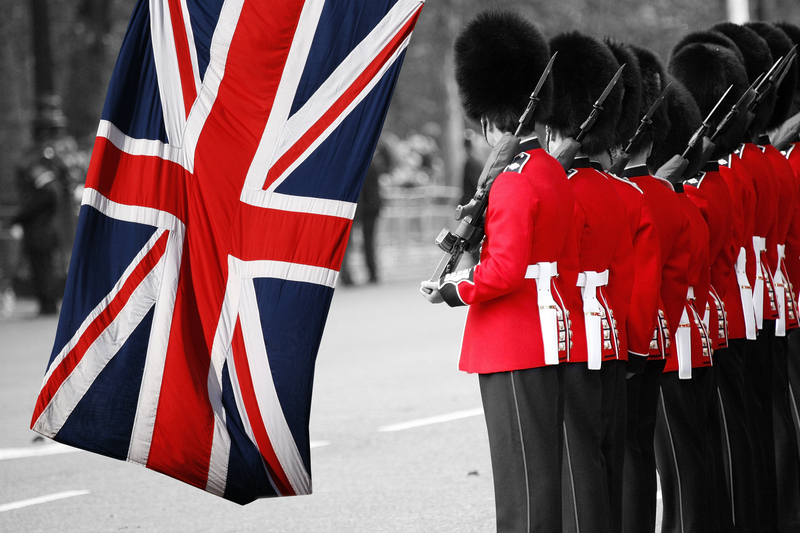Expert Tips on Moving Your Bed and Mattress Safely
Moving can be a daunting task, especially when it comes to handling your largest and most essential pieces of furniture--your bed and mattress. Safe bed and mattress moving is crucial not only to protect your investment but also to ensure you get a good night's sleep in your new home. In this comprehensive article, we provide expert advice and actionable steps for moving your bed and mattress safely and efficiently. Whether you're tackling a DIY move or hiring professionals, the following tips and techniques will ensure your bedroom furniture arrives in top condition.

Why You Should Move Your Bed and Mattress With Care
Your bed and mattress are significant investments in your overall health and wellbeing. Mishandling them during a move can lead to irreparable damage, loss of comfort, and even the voiding of warranty. Mattresses, in particular, are vulnerable to rips, stains, and misshaping. A well-preserved mattress and bed will not only last longer but also provide continued support and comfort in your new home.
- Protect Your Investment: High-quality beds and mattresses often come with a hefty price tag.
- Preserve Comfort: Damage can lead to lumps or loss of structure.
- Maintain Warranty: Most warranties are void if improper moving procedures result in damage.
- Ensure Hygiene: Mattresses can easily pick up dust, moisture, and pests if inadequately covered.
Preparing to Move Your Bed and Mattress
Gather the Right Tools and Supplies
The first step for moving a mattress and bed safely is gathering the appropriate equipment. With the right tools, the process becomes much smoother and safer for both you and your furniture.
- Mattress Bag or Plastic Cover: Protects against dirt, water, and tears.
- Furniture Sliders: Make moving cumbersome pieces easier without damaging floors.
- Moving Straps: Provide leverage and distribute weight safely.
- Tool Kit: For dismantling bed frames (screwdrivers, wrenches, Allen keys, etc.).
- Furniture Dolly: An essential tool for transporting heavy mattresses and bed frames.
- Packing Tape: Secures protective covers and keeps bed components together.
- Labels and Zip Bags: For storing screws, bolts, and other small hardware pieces.
Clean and Inspect Your Bed and Mattress
Before packing, thoroughly clean your mattress and bed frame. Vacuum both sides of your mattress to eliminate dust mites or debris. This is also a perfect opportunity to check for damage, such as sagging, broken slats, or loose screws, and address any repairs before the move.
Disassembling Your Bed for a Safe Move
Most bed frames are too large to fit through doorways or down stairs when fully assembled. Disassembling your bed frame not only makes moving easier but also reduces the risk of scraping walls or damaging furniture. Here's how you can do it safely:
- Remove Bedding and Pillows: Strip your bed of all linens, pillows, and mattress protectors.
- Take Photos: Use your phone to take photos during each step of disassembly. This will help you during reassembly at your new place.
- Detach Headboard and Footboard: Unscrew and carefully separate these parts from the main frame.
- Remove Side Rails and Slats: If your bed uses side rails or wooden slats, remove them next.
- Store Hardware Securely: Place all screws, bolts, and small parts in clearly labeled zip bags and tape them to the headboard or keep them in a designated box.
- Wrap Wooden or Metal Parts: Use moving blankets or bubble wrap to guard against scratches and dents.
Tip: If you have a particularly intricate or antique bed frame, consider keeping the instructions or seeking professional help for disassembly and reassembly.
Packing and Protecting Your Mattress for Transportation
Choosing the Best Mattress Cover
An essential step in moving your mattress safely is properly packing it. Mattresses should always be transported in a protective cover to defend against dirt, moisture, and damage. Opt for a heavy-duty plastic mattress bag, available at most moving supply stores. For added protection, double-wrap the mattress or use additional padding at the corners.
Standing or Laying - How to Position Your Mattress
The correct positioning of your mattress during transit matters:
-
Memory Foam and Latex Mattresses:
- Always transport flat and never upright. Folding or bending can permanently damage the internal structure.
-
Innerspring Mattresses:
- These can generally be transported upright for short distances, but avoid extensive bending.
-
Hybrid Mattresses:
- Follow manufacturer instructions, as hybrids contain both coils and foam. When in doubt, keep flat.
Extra Padding for Luxury Mattresses
For high-end or pillow-top mattresses, use extra bubble wrap or moving blankets along the edges to prevent scuffing and tears. Secure padding with packing tape, ensuring you don't tape directly to the mattress surface.
How to Move Your Bed Frame Safely
Label and Protect Bed Parts
When you've disassembled your bed, wrap each component with a soft furniture pad or blanket. Label each piece using masking tape for quick reassembly. Keep hardware kits taped to the respective bed parts or inside a labeled zip bag.
- Protect Sharp Edges: Use extra padding to wrap exposed corners and legs that might bump into walls or doors.
- Guard Against Scratches: Wooden frames, in particular, benefit from being wrapped in moving blankets.
Lifting and Carrying Techniques
Moving experts recommend always lifting with your legs, not your back. Bend your knees, keep your back straight, and carry bed parts close to your body. For particularly heavy components, use moving straps or enlist help. Never attempt to move large bed frames by yourself--teamwork is essential for safer bed moving.
Transporting a Mattress and Bed Safely
Loading into the Vehicle
- Use a Moving Truck or Van: A large enough vehicle provides the flat space needed for most mattresses and accommodates frame parts without crushing them.
- Lay Mattresses Flat (if recommended): Place mattresses on a flat surface on the truck floor to preserve their shape, unless they must go upright due to space--always check with your mattress manufacturer for guidance.
- Secure Bed Parts: Place bed components along the sides of the truck and fasten them with straps to prevent shifting.
- Avoid Stacking Heavy Items: Never stack heavy furniture on top of a mattress, which can lead to compression and damage.
Securing the Load
Use ratchet straps or strong ropes to secure both the bed frame and mattress in the moving vehicle. This keeps everything stationary during transport, reducing the risk of shifting that could cause damage or injury.
Unpacking and Reassembling in Your New Home
Unpack Carefully
When you arrive at your destination, unload and unpack the mattress and bed frame first, giving yourself ample room to work. Carefully remove protective covers and inspect both the mattress and bed components for any damage incurred during the move.
Reassembling Your Bed
- Reference Your Photos: Use the disassembly photos to guide you through putting your bed back together.
- Lay Out All Parts: Organize bed slats, screws, and rails before assembly to ensure nothing is missing.
- Check for Level and Stability: Ensure all joints are secure, bolts are tightened, and the frame sits flush against the floor.
- Freshen Your Mattress: Before dressing your bed, allow your mattress to air out for a few hours, releasing any travel odors or moisture.
Special Tips for Moving Adjustable and Platform Beds
Moving Adjustable Bed Bases
Adjustable bed frames require special care. Before moving, disconnect the power supply and secure all electrical components. Most adjustable bases can be folded for easier transport, but refer to your manufacturer instructions to avoid damaging sensitive mechanisms.
Platform Beds
Platform beds often have multiple slats or even solid panels. Label each piece for hassle-free reassembly, and ensure you have the original hardware or compatible replacements on hand.
Common Mistakes to Avoid When Moving Beds and Mattresses
- Skipping the Mattress Cover: This exposes the mattress to potential tears, stains, and bedbugs.
- Moving Mattresses Alone: Mattresses are heavier and more unwieldy than they appear--attempting a solo move risks injury and damage.
- Improper Lifting Technique: Always lift with your legs, and get help for heavy or awkward pieces.
- Forgetting to Secure Bed Hardware: Missing bolts and screws will delay reassembly and can create safety hazards.
- Ignoring Manufacturer Guidelines: Each mattress type has unique handling and transport recommendations.
When to Hire Professional Movers for Bed and Mattress Relocation
Sometimes, calling in professional movers is the wisest choice--especially if you have a king-size bed, luxury mattress, or complex frame. Movers have the experience and equipment to move beds and mattresses safely without risking your health or your investment.
- Larger or Heavier Beds: Professional movers handle bulk with ease and efficiency.
- Long-Distance Moves: Movers can ensure your bed and mattress are packed for cross-country travel.
- Antique or Irreplaceable Frames: Specialists minimize the risk of damage to valuable pieces.
- No-Access Situations: Movers manage beds over balconies, narrow stairways, or tight corners safely and efficiently.

Frequently Asked Questions About Moving Beds and Mattresses
Can I fold my mattress to get it through a doorway?
No, most mattresses should not be folded, especially memory foam, latex, and hybrids. If the mattress must be bent, check the manufacturer's instructions to avoid structural damage.
How do I keep my mattress clean during a move?
Mattress bags are essential. Look for thick, waterproof covers that fully encase the mattress. Add another layer for extra protection if moving on a rainy day.
How can I tell if my mattress was damaged during the move?
Inspect for tears, sagging, lumpy areas, or unusual odors. If in doubt, let it air out for a day and do a comfort check before use.
Conclusion: Ensuring a Safe and Successful Move for Your Bed and Mattress
Moving your bed and mattress safely doesn't have to be stressful. By following these expert tips, from preparation and packing to transport and reassembly, you can protect your valued bedroom essentials and enjoy comfortable sleep in your new space. Invest in the right supplies, take your time with disassembly, and don't hesitate to seek help for tricky moves. With good planning and a gentle touch, your bed and mattress will arrive at your new home just as comfy and sturdy as before.
Ready to tackle more moving tasks? Explore our other moving guides for more expert insights on ensuring all your belongings travel safely!



